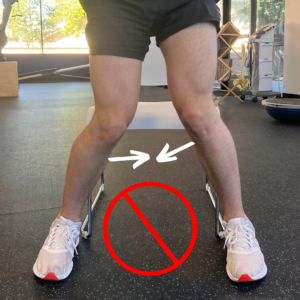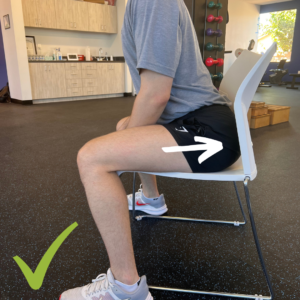The Power of the Sit to Stand (Squat)
Do you…
find it hard to get out of a chair?
have difficulty bending down to pick things up from the floor?
feel like your legs have become weaker over time?
Many people know the importance of strengthening and conditioning for maintaining your physical health and well-being. Yet people often attribute their weakness and fatigue to getting older.
Generalized deconditioning and weakness can happen at any age but getting old is not a symptom. If you are interested in taking back your independence and improving your movement, follow along for one of the best exercises to help keep you feeling young.
It is important to remember that a lack of maintenance for the body can have a detrimental effect on physical function and mobility. Many adults neglect to maintain their strength and function as they age.
It is not necessary to have a gym membership, access expensive exercise equipment, or participate in group exercise classes. While physical therapy can also be beneficial for slowing and reversing the effects of aging, but is not always necessary. Exercise can come in many shapes and sizes.
One of the best exercises you can do to “stay young” only requires your body, a chair (at first), a little bit of time, and the drive to improve your health and well-being. Today we are going to talk about the squat, or its regression, the sit to stand.
“There is no way I can do a squat anymore! I haven’t done that in years!”
I hear this a lot from my patients.
My response is always, “Do you ever sit down and get up from a chair?”
Sit to stands are just squats into a chair. This exercise really is as simple as sitting down and standing up into a chair with a few specific cues to strengthen your glutes and quadriceps muscles as well as improve lower chain stability and balance. Here we go:
Begin by sitting toward the front of any chair you like, preferably one with a firm surface.
Position your feet flat on the ground, shoulder width apart, and slightly behind your knees.
Lean your body forward, aiming to have your nose over your toes, and focus on squeezing your glutes to stand up.
Stand all the way up, straightening your hips and spine completely before trying to sit back down.
The descent is essentially the reverse order of standing but there are a few key reminders to note. It is certainly easier for some adults to simply “plop” down into the chair without any effort, but the most important part of this step is to lower yourself with control to strengthen your leg muscles and improve the mind-muscle connection. Plopping does not work on any muscle strength and only increases your chances of injuring yourself or falling out of the chair onto the floor.
If you need to, lean forward at the hips while slightly bending your knees and place one or both hands on the chair or armrests. Now, slowly lower yourself onto the surface while focusing on your legs doing the work, your hands will only be for safety if you require them. This eccentric lowering focuses not only improving muscle strength but works on your ability to really control your motion.
If this is difficult at first, feel free to use your hands to assist you in raising and lowering your body. As you become stronger, you will notice you no longer need to use your hands to assist you and that your legs can do all the work. Try not to let your knees bend inward toward each other by squeezing your glutes during the motion.



Repeat this exercise for 3 sets of 10 repetitions in a slow and controlled manner, or as many as you can do before you become too tired to continue. When you do get tired, take a brief rest to recuperate and then try again!
Don’t be surprised and don’t become discouraged if you become a bit sore shortly after or the following day. This is a normal response called Delayed Onset Muscle Soreness (DOMS) and can occur if you have not been very physically active recently. While it may be very sore, rest assured that it will pass after a day or so. During this time, stretch and try a few squats every few hours to work out the soreness. After a few days of this, you may find that your body no longer becomes sore from the motion and you will notice that it has become much easier to get in and out of a chair or perform the full movement.
Progressions
Once this motion becomes easy, you can progress it to make it harder by changing several variables:
- Arm Rests – Stop using the arm rests and focus only on using your legs
- 2. Seat Height (No chair) – The first thing you can change is using a chair with a lower seat or removing the chair entirely if you feel comfortable and safe enough to not fall.
- Foot position – Changing foot position can help you target strengthening one leg more than the other. The foot positioned closest to you will be the leg you are focusing on strengthening.
- Add Weight – hold something, a weight, a stack of books, your grandchild, anything!
If you have difficulty getting into or out of a chair, have a history of falling while trying to stand or sit, or just want some refinement in your exercise performance, contact your AzOPT physical therapist for an evaluation including a movement assessment to develop a plan of care tailored to you and your needs.







